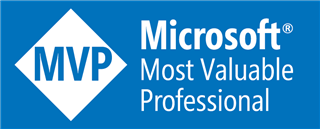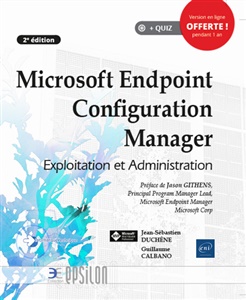
Microsoft vient de publier l’Update Rollup 3 pour les produits System Center 2012 R2. Avant d’appliquer cet UR, lisez bien les articles de la base de connaissances associés. Vous pouvez les déployer manuellement en récupérant les CAB ou via Windows Update/WSUS.
Celui-ci corrige les problèmes suivants :
System Center 2012 R2 Orchestrator (2931268)
- When a runbook calls other runbooks, Service Management Automation (SMA) concatenates all the participating runbooks into a single script and then passes the script to the PowerShell Workflow engine for compilation. The resulting script may contain multiple signature blocks, and SMA receives a compilation error from the Powershell Workflow.
- When child runbooks contain a signature block, the child runbooks cannot be compiled into inline runbooks. If there is more than one signature block, the resulting runbook will be corrupted.
- Cmdlets should request information from the server, up to a limit on the number of records that are returned, and then request the next "page" of records, until all records are retrieved.
- When a Windows PowerShell user uses the Set-SmaCertificate cmdlet, the user cannot receive private key information when he or she uses the Get-AutomationCertificate activity.
- The Automation menu stops working in Administrator Portal, and you may notice that the Orchestrator ODATA API controller cannot return Modules data. Additionally, you receive the following error message:
Microsoft.Data.OData.OdataInnerError
Message: The file exists.
TypeName: System.IO.IOException
- Service Management Automation (SMA) resources are paged. The cmdlets have to evaluate the response from the web service for the presence of a continuation token and then make a sequence of ListNext web requests if a continuation token is present.
- SMA may not return the latest job ID for the runbook. The Invoke-ConfiguratorRunbook activity will have the job ID when it calls the Start-SMARunbook cmdlet, and the job ID should be returned to the caller. This occurs because SMA does not return the most recent job for a runbook. This issue occurs occur in a multiple-run scenario. If the configurator passes the first run, this issue has no effect.
- The Orchestrator Runbook Service (RunbookService.exe) may crash, and you receive the following error message:
Application: RunbookService.exe
Framework Version: v4.0.30319
Description: The process was terminated due to an unhandled exception.
Exception Info: System.ServiceModel.CommunicationException
- If a runbook is large enough to exceed the default Windows Communication Foundation (WCF) channel size, an exception occurs. This issue causes the job to be stuck in the "New" state.
- When Update Rollup 2 is uninstalled, the connection properties to the instance of Microsoft SQL Server are cleared.
System Center 2012 R2 Operations Manager (2965445)
- A deadlock condition occurs when a database is connected after an outage. You may experience this issue may when one or more HealthServices services in the environment are listed as Unavailable after a database goes offline and then comes back online.
- The Desktop console crashes after exception TargetInvocationException occurs when the TilesContainer is updated. You may experience this issue after you leave the console open on a Dashboard view for a long time.
- The Password expiration monitor is fixed for logged events. To make troubleshooting easier, this fix adds more detail to Event IDs 7019 and 7020 when they occur.
- The Health service bounces because of high memory usage in the instance MonitoringHost: leak MOMModules!CMOMClusterResource::InitializeInstance. This issue may be seen as high memory usage if you examine monitoringhost.exe in Performance Monitor. Or, the Health service may restart every couple of days , depending on the load on the server.
- The Health service crashes in Windows HTTP Services (WinHTTP) if the RunAs account is not read correctly.
- Windows PowerShell stops working with System.Management.Automation.PSSnapInReader.ReadEnginePSSnapIns. You may see this issue as Event ID 22400 together with a description of "Failed to run the Powershell script."
- The PropertyValue column in the contextual details widget is unreadable in smaller widget sizes because the PropertyName column uses too much space.
- The update threshold for monitor "Health Service Handle Count Threshold" is reset to 30,000. You can see this issue in the environment, and the Health Service Handle Count Threshold monitor is listed in the critical state.
- An acknowledgement (ACK) is delayed by write collisions in MS queue when lots of data is sent from 1,000 agents.
- The execution of the Export-SCOMEffectiveMonitoringConfiguration cmdlet fails with the error "Subquery returned more than 1 value.”
- The MOMScriptAPI.ReturnItems method can be slow because a process race condition may occur when many items are returned, and the method may take two seconds between items. Scripts may run slowly in the System Center Operations Manager environment.
- When you are in the console and click Authoring, click Management Pack, click Objects, and then click Attributes to perform a Find operation, the Find operations seems unexpectedly slow. Additionally, the Momcache.mdb file grows very large.
- A delta synchronization times out on SQL operations with Event ID 29181.
- Operations Manager grooms out the alert history before an alert is closed.
- The time-zone settings are not added to a subscription when non-English display languages are set. Additionally, time stamps on alert notifications are inaccurate for the time zone.
- Web Browser widget requires the protocol (http or https) to be included in the URL.
- You cannot access MonitoringHost's TemporaryStoragePath within the PowerShell Module.
- The TopNEntitiesByPerfGet stored procedure may cause an Operations Manager dashboard performance issue. This issue may occur when a dashboard is run together with multiple widgets. Additionally, you may receive the following error message after a time-out occurs:
[Error] :DataProviderCommandMethod.Invoke{dataprovidercommandmethod_cs370}( 000000000371AA78 )
An unknown exception was caught during invocation and will be re-wrapped in a DataAccessException. System.TimeoutException: The operation has timed out.
at Microsoft.EnterpriseManagement.Monitoring.DataProviders.RetryCommandExecutionStrategy.Invoke(IDataProviderCommandMethodInvoker invoker)
at Microsoft.EnterpriseManagement.Presentation.DataAccess.DataProviderCommandMethod.Invoke(CoreDataGateway gateWay, DataCommand command)
System Center 2012 R2 Service Manager (2962041)
- The Microsoft Systems Center 2012 Operations Manager configuration item (CI) connector does not retrieve disk mount point information for the Service Manager database.
- When a service request is created from a request offering in the console and when every user prompt is of the Simple List prompt type, the console shows options from all simple lists in each user prompt.
- When you try to close a customized change request, you cannot close the change request, the task throws an error, and the close is not actioned.
- MPSync job failures that are logged to the event log do not contain enough information to allow for a quick diagnosis of the problem.
- All Service Manager workflows may stall when any invalid XML characters (control characters) are used in a work item property.
- Using the "Set First Response or Comment" task in a service request creates a "Private" flag that cannot be used for evaluation in a notification action log or a user comment update. This behavior occurs because the private flag is undefined.
- If the configuration management database (CMDB) is down (that is, if it is offline or unable to connect because of network issues) at the time that the Health service is restarted and if the CMDB continues to be offline for a long time, the Health service may enter an unrecoverable state even if the database comes online again later.
- Configuration Manager Connector synchronization may stop after Update Rollup 6 for Service Manager 2012 SP1 or Update Rollup 2 for Service Manager 2012 R2 is applied. This issue occurs when the connector tries to synchronize malformed or incomplete software version information from the Configuration Manager database.
System Center 2012 R2 Virtual Machine Manager (2965414)
- Total storage for a User role is reported incorrectly. For example, the User role can use only half of the allowed quota.
- A host cluster update fails intermittently because of a locked job.
- Virtual machine (VM) refreshers do not update highly available virtual machines (HAVMs) after failover to another node.
- A cluster IP address for a guest cluster configuration in a Hyper-V Network Virtualization (HNV) environment is not updated correctly by using HNV policies during failover. For more information about this issue, see the following article in the Microsoft Knowledge Base:
2981736(http://support.microsoft.com/kb/2981736/ )
- · The cluster IP address in an HNV environment is updated incorrectly during failover
- Server Message Block (SMB) shares may not be usable by high availability (HA) workloads if they are also connected to stand-alone hosts.
- Storage objects discovery does not occur on a Virtual Machine Manager server if the discovery item is too big.
- A Virtual Machine Manager job that assigns network service backend connectivity fails.
- Enable maintenance mode fails when you evacuate failed-state VMs.
- The Virtual Machine Manager service cannot be restarted because of database corruption.
- The ZH-TW language incorrectly appears in the tooltip of the VM Network icon.
- Library refresher rewrites the alternative data stream on every file during every update.
- For iSCSI hardware storage-based array, when the MaskingPortsPerView property option is set to "multi-port per view," the target endpoint is not obtained as the port address.
- The virtual hard disk (VHD) is left in the source folder after storage migration is completed.
- The addition of a bandwidth limitation to an existing virtual private network (VPN) connection is not added to the generated script.
- A VM that is attached to an HNV VM network loses connectivity when it is live migrated to another node in the failover cluster that is not currently hosting other VMs that belong to the same VM network.
- VM network shared access is lost after a service restart or an update interval.
- The Remove-SCFileShare command fails for a network-attached storage SMI-S provider.
- Setting the template time zone to UTC (GMT +0:00) is incorrectly displayed as "Magadan Standard Time."
- The System Center 2012 R2 Virtual Machine Manager crashes when you add groups that contain the at sign (@) character in User roles.
- VM deployment fails in a VMWare environment when you have virtual hard disk (.vmdk) files of the same size in your template.
- Deployment of an application host on HAVMM fails and generates a 22570 error.
- Live migration of an HAVM cross cluster creates a duplicate VM role in the target cluster.
- An error occurs when you apply physical adapter network settings to a teamed adapter.
- A VMM agent crashes continuously when the HvStats_HyperVHypervisorLogicalProcessor query returns a null value.
- A host refresh does not update the VMHostGroup value of a VMWARE cluster after the cluster is moved from VCENTER.
- VMM reports an incorrect Disk Allocation size for dynamic VHDs that are mapped to a virtual machine.
- A VMM service template script application does not work for a self-service role.
- VM creation fails if Virtual Machine Manager undergoes failover during the creation process.
- The Access Status value of a file share is incorrect in the user interface.
- The Virtual Machine Manager service crashes because of an invalid ClusterFlags value.
- VMs cannot be deployed from a service template to a cloud across multiple host clusters (multiple datacenters).
De plus, il apporte les fonctionnalités et améliorations suivantes:
- Support d’Ubuntu Linux 14.04 (32 et 64 bits)
- Host DHCP extension driver upgrade
- Several performance improvements
- Several Management Pack package improvements
Télécharger :
- Update Rollup 3 for System Center 2012 R2 Orchestrator
- Update Rollup 3 for System Center 2012 R2 Operations Manager
- Update Rollup 3 for System Center 2012 R2 Service Manager
- Update rollup 3 for System Center 2012 R2 Virtual Machine Manager Server
- Update rollup 3 for System Center 2012 R2 Virtual Machine Manager Console



